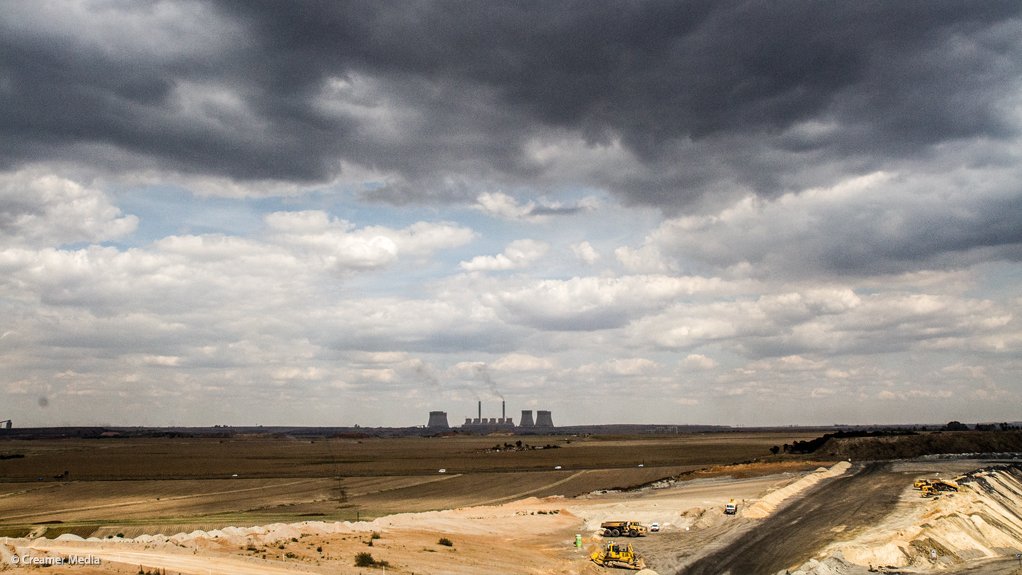BP says coal’s 2014 stall included structural and cyclical dimensions
BP chief economist Spencer Dale has described the stalling of Chinese coal consumption in 2014 as “perhaps the single most striking number” in the group’s latest statistical review, which was published in London on Wednesday against a backdrop of major energy-market uncertainty.
This volatility was also reflected in the publication’s title – ‘Energy in 2014: After a calm comes the storm’ ¬– while BP CEO Bob Dudley mused that, in contrast to the “predictable and incremental” changes recorded in pervious editions, the 2014 review was “more dramatic”.
It was a year, the report showed, when oil prices plummeted, carbon emissions grew at one of their slowest rates for over 15 years and US oil output rose above its previous 1970 peak, allowing the country to overtake both Saudi Arabia and Russia as the world’s largest oil producer for the first time since 1975.
Still it was the performance of coal that stood out for Dale, who argued that both structural and cyclical factors lay behind the performance of the energy mineral, whose fortunes were inextricably linked to China’s industrialisation path. This association resulted in the energy mineral being the fastest growing fossil fuel for the first ten years of this century. But as Chinese demand “braked sharply” in 2014, coal emerged as the slowest growing fossil fuel.
BP reports that global coal consumption grew by just 0.4%, or 15-million tons of oil equivalent (Mtoe), in 2014, its slowest rate since the Asian crisis in 1998. Global production, meanwhile, declined by 0.7%, or 28 Mtoe. Coal prices responded by falling to their lowest level in five years.
China’s coal consumption, the review said, grew by just 0.1%, compared with 2% in 2013 and an average of almost 6% over the past ten years. Chinese coal production fell even faster, 2.6% or 49 Mtoe.
The decline in China was partly the result of a generalised slowdown in China’s energy demand, which Dale estimated accounted for two-thirds of the slowdown in the country’s coal consumption.
But coal also lost out relative to other fuels, partly because it was disproportionately exposed to the industrial sectors most severely affected by China’s economic rebalancing, such as iron, steel and construction.
“Coal also lost share in the power sector, in part as a result of exceptionally strong growth in Chinese hydro power (15.7%), as new capacity came on stream and high levels of rainfall buoyed utilisation rates.”
For this reason, Dale argued that the 2014 performance was the result of a “mix of both structural and one-off effects” and stressed that there could even be a partial reversal in some areas where the consumption had been influenced by one-off developments.
He also warned against “sweeping” judgements about the future of coal, the outlook for which some felt had been weakened by the Leaders’ Declaration emerging from the recent G7 Summit in Germany, which called for urgent action to address climate change. The declaration said “deep cuts” in global greenhouse gas emissions were required, along with a “decarbonisation of the global economy over the course of the century”.
BP pointed out that, outside of China, India had provided the main source of strength for the global coal market, where both consumption and production grew strongly. “The vast majority of the increased demand for coal in India came from the power sector, enabling total power generation in India to increase by almost 10% in 2014, its strongest rate of increase since 1989. In a similar vein, Africa also increased its consumption of coal in 2014.”
Nevertheless, Dale said that while coal, which currently had a 30% share of global primary energy, was likely to sustain a dominant share, its rate of growth was likely to slow over the medium term.
He said coal’s 2014 performance was arguably an “extreme version” of a longer-term trend, which was likely to result in the demand for the mineral growing slower than that of other fossil fuels over the coming 20 years.
Comments
Press Office
Announcements
What's On
Subscribe to improve your user experience...
Option 1 (equivalent of R125 a month):
Receive a weekly copy of Creamer Media's Engineering News & Mining Weekly magazine
(print copy for those in South Africa and e-magazine for those outside of South Africa)
Receive daily email newsletters
Access to full search results
Access archive of magazine back copies
Access to Projects in Progress
Access to ONE Research Report of your choice in PDF format
Option 2 (equivalent of R375 a month):
All benefits from Option 1
PLUS
Access to Creamer Media's Research Channel Africa for ALL Research Reports, in PDF format, on various industrial and mining sectors
including Electricity; Water; Energy Transition; Hydrogen; Roads, Rail and Ports; Coal; Gold; Platinum; Battery Metals; etc.
Already a subscriber?
Forgotten your password?
Receive weekly copy of Creamer Media's Engineering News & Mining Weekly magazine (print copy for those in South Africa and e-magazine for those outside of South Africa)
➕
Recieve daily email newsletters
➕
Access to full search results
➕
Access archive of magazine back copies
➕
Access to Projects in Progress
➕
Access to ONE Research Report of your choice in PDF format
RESEARCH CHANNEL AFRICA
R4500 (equivalent of R375 a month)
SUBSCRIBEAll benefits from Option 1
➕
Access to Creamer Media's Research Channel Africa for ALL Research Reports on various industrial and mining sectors, in PDF format, including on:
Electricity
➕
Water
➕
Energy Transition
➕
Hydrogen
➕
Roads, Rail and Ports
➕
Coal
➕
Gold
➕
Platinum
➕
Battery Metals
➕
etc.
Receive all benefits from Option 1 or Option 2 delivered to numerous people at your company
➕
Multiple User names and Passwords for simultaneous log-ins
➕
Intranet integration access to all in your organisation





















